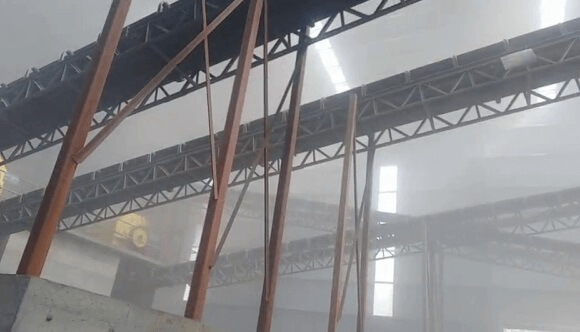Dust, the tiny particles that seem to seep into every crevice and obscure our view, can be a constant annoyance across industries. In the beneficiation process of any mineral, the crushing experiment is an essential link.
After visiting the crushing experiments of many companies, we found that the crushing equipment will generate a lot of dust during the crushing process, which has caused great pollution to the surrounding environment and a great threat to the health of operators. When machinery grinds raw materials into smaller pieces, fine dust is released into the air, posing many health and safety risks to workers. It was all about finding an effective solution for dust reduction that neither compromised the integrity of the crushing experiment nor hampered productivity.

Mineral Crushing Experiment
The mineral crushing experimental process is a technical process in mineralogy, geology, etc., to crush and pulverize mineral samples for subsequent analysis, testing, experiments and other operations. Different types of mineral samples have different hardness, brittleness and composition, so in the mineral crushing process, it is necessary to choose a crushing method suitable for the characteristics of the sample. The following are some common lab mineral crushing processes and equipment:
1. Mechanical crushing: It is crushing or shearing a sample into small particles by mechanical force. Commonly used equipment includes jaw crushers, hammer crushers, ball mills, etc. These devices are suitable for different types of samples and the degree of fragmentation can be adjusted.
2. Ball grinding method: Ball mill is crushing a sample by adding grinding media (such as steel balls) to the grinding cylinder and rotating the grinding cylinder. It is suitable for harder materials and can obtain uniform fine particles.
Solutions (How To Reduce Dust)
1. Wet crushing: reduce the dust generated during crushing by adding water or other liquids. This helps control dust generation and spread. Spraying the minerals with a water mist during the crushing process helps to contain dust and keep it from becoming airborne. The added moisture acts as a binder, preventing dispersion and making it easier to clean up later.
2. Dust collector: Use dust collectors, collectors, and other equipment to collect the generated dust to prevent the dust from spreading into the indoor air. These systems work by trapping and containing dust particles produced during crushing, reducing their spread throughout the area. Choosing advanced dust control equipment can protect workers from harmful particulate matter while promoting a cleaner work environment.
3. Ventilation equipment:
- Install good ventilation equipment in the crushing test laboratory, such as exhaust fans and ventilation systems, which can help to discharge the generated dust to the outside and reduce the indoor dust concentration.
- Install an exhaust system or equipment to directly extract the generated dust from the laboratory to reduce the spread of dust in the room. Make sure the exhaust system has adequate flow and filtration capacity.
4. Closed operation: Place the crushing equipment in a closed operating room to prevent dust from spreading to the outdoor environment. After the crushing test, mop the ground and clean the operating table in time to avoid the residual dust from spreading further.
5. Personal protective equipment: Operators should wear appropriate personal protective equipment, including masks, goggles, gloves, etc., to reduce the risk of dust inhalation and skin contact.
6. Safety operating procedures: Formulate and strictly implement procedures to ensure operators understand the correct operating procedures and protective measures to reduce the risk of dust exposure.
7. Regular inspection and maintenance: Regular inspection and maintenance of ventilation equipment, dust collectors and other equipment to ensure regular operation and effective control of dust problems.
Additionally, adjusting certain parameters such as feed rate, crusher speed and closed side settings can significantly reduce excess dust generation. By taking the above measures, the problem of large dust in ore crushing experiments can be effectively solved. This will create a safer and healthier working environment for all relevant personnel.
Remember, safety should always be a priority when handling potentially hazardous materials such as mineral dust during any experimental or industrial operation. Reducing dust is very simple. With the advancement of science and technology, Asia-Africa International has developed various types of environmentally friendly lab crushing processes and equipment, which can effectively suppress dust emissions with good performance and high efficiency, and the price is quite beautiful. If you have purchasing intentions or other questions, don’t hesitate to contact us online or visit our factory. Let us contribute to environmental protection. Refuse dust; start from me!
